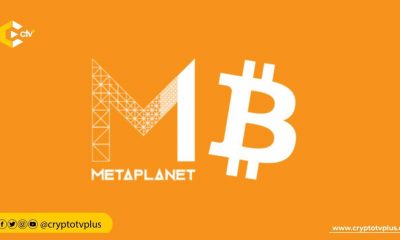Opinion
Yield Farming Demystified

“Yield Farming” is a DeFi coinage which means participating in a DeFi project by stashing or staking cryptos in the DeFi Application with the projection of significant interest or returns on investment.
Yield farming and “liquidity mining” can be used interchangeably and both mean a situation where an exchange gives a pool of miners considerable returns for stashing their assets as liquidity for a token.
In simple terms, for an individual’s contribution to a DeFi project, he gets to earn tokens.
The term ICO- Initial Coin Offering- can be used to illustrate how yield farming runs- as a new DeFi project is released, with the emergence of a novel token running on the project, investors stash their monies into it and participate in the use of the project in high hopes of earning rewards on investment.
The more there are demands for such token, as a general law of demand, the assets locked in the DeFi token and application booms.
How Yield Farming is Utilized
Although this is very dependent on what type of feature a DeFi App possesses, the most popular way is for a DeFi App participant to earn rewards in form of tokens by participating in the DeFi project.
Before Yield Farming became popular, it started out as an arrangement where DeFi developers would offer a fraction of their transaction fees to participants for stashing their assets into a DeFi App. It enjoyed wider mainstream adoption in 2020 with the emergence of COMPOUND, when the DeFi App offered to give its governance token, COMP, to lenders and borrowers who use the App.
This move proved successful, by spiralling COMPOUND upward. In fact, the App enjoyed the premier position on DeFi charts. Now we have several DeFi Apps using the yield farming system with much success. High earning yield farmers scale their ROI by using rather complex investment plans.
These plans revolve around staking DeFi tokens such as USD Coin(USDC), Tether (USDT), Dai, Ether (ETH) in a chain of DeFi projects so as to earn high returns. Usually stablecoins like USDT, USDC etc. are preferred when staking assets in DeFi projects because of their relatively easier way of estimating losses and profits.
Perks and Risks of Yield Farming
Yield farming is one way to earn significant profits. Early investors who stash their monies into a DeFi App before mainstream rush tend to earn more rewards that scale in value over time.
Selling these tokens when the tokens are gaining wider adoption equals more profits as the tokens will then be hot and of higher value. Mind you, yield farmers stake a significant amount of capital into DeFi Apps so as to earn considerable returns.
We all know how volatile cryptos especially DeFi tokens can be. As much as there is a promise of high yields, yield farmers have to be prepared for market dips as their monies can tank following the discovery of bugs in the underlying DeFi protocol code. In fact, to be a yield farmer is to not be risk averse.
It is advisable that before anyone decides to invest their monies into any protocol, they understand how the protocol operates and they know how to deploy relevant yield farming strategies.
It is smart to audit whatever protocol one is looking to invest in, but regardless of how honest and transparent a protocol team is, this does not translate to their program being bug-proof. Bugs exposes a DeFi project to potential hacks and we know what that means seeing what became of YAM Finance and bZx.
These projects started out well but the developers realized loopholes in their underlying codes that led to huge loss of monies after their great crashes.
Downsides
The fact that most DeFi protocols run on the Ethereum Blockchain (with the blockchain’s inherent problems) is a clog in the wheel for yield farmers. One major challenge is the inherent lack of scalability of the Ethereum Network, which means that as more users swamp the network, confirmation time become more dragged and transaction fees continue to blow roofs off. In response to this gap, we have the Binance Smart Chain as a substitute network that yield farmers can opt for so as to use new DeFi DApps like BurgerSwap. With Ethereum developers actively creating a new solution to the problem of scalability and new programs ensuing, do you think DeFi yield farming will enjoy a bright future or is it an invention that will die down just as it rose?
























